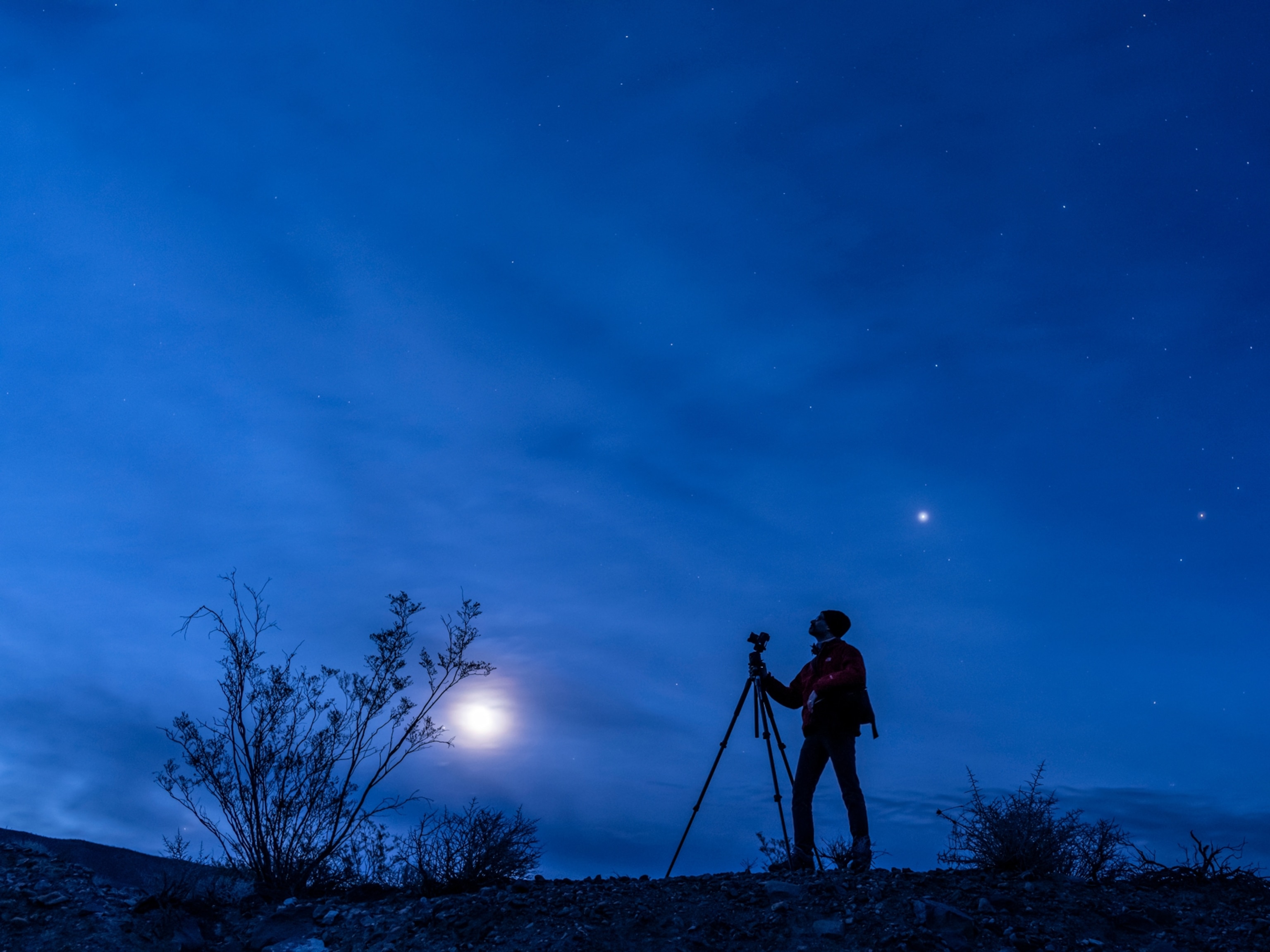
Equinox supermoon, and more can't-miss sky shows in March
Look up this month to see planetary pairings, ghostly lights, and a special spring supermoon.
The coming month heralds the last supermoon of 2019, as well as a series of stunning lunar pairings, and plenty more reasons to look up at the night sky. You’ll even have the chance to spy on ghostly glows caused by interplanetary particle clouds.
So dust off those binoculars, and mark your March calendar!
Worlds dominate dawn—March 1-3

As the month opens, early risers will be treated to the sight of Venus, Jupiter, and Saturn joined by a waning crescent moon. This brilliant grouping will hang in the southeastern sky about an hour before local sunrise for a couple days in a row.
Mars and moon set—March 11

Look toward the West as darkness falls on this night to see the waxing crescent moon near orange star-like Mars. Both worlds will seem to be separated by about seven degrees, and they will set together around local midnight.
Lion’s heart meets moon— March 18

Look for the waxing gibbous moon to pair up with Regulus, the brightest star in the constellation Leo, the lion, on the 18th. The blue-white star sits about 76 light-years away but will appear to be separated from the moon by only two degrees, equal to the width of your two middle fingers held at arm’s length. The cosmic duo will glide across the overnight sky in tandem, but they will have noticeably drifted apart by dawn.
Equinox arrives—March 20
Astronomically speaking, the March equinox is one of four major turning points in our planet’s seasonal cycle.
Earth’s axis is tilted with respect to the sun, so during most of the year, one hemisphere is either tilted away from or toward the sun, driving the seasons. However, the March and September equinoxes mark the points when both hemispheres are equally exposed. The word “equinox” comes from Latin meaning “equal night,” and it’s on these two days that the periods of light and dark in our 24-hour cycle appear to be about the same length, or roughly 12 hours each.
This year, the March equinox officially arrives at 5:58 p.m. ET (21:58 UTC) on the 20th, heralding the arrival of spring in the Northern Hemisphere. While it may still feel like winter for some parts of the north, we can take heart that Earth will warm up as the midday sun climbs higher and the days get longer.
Super worm moon shines—March 20
Adding to the equinox excitement, the night of the 20th will see the moon officially reach its full phase and be at its closest and largest for the month, delivering what has come to be known as a supermoon.
Because the moon's orbit is egg-shaped, there are times in the roughly month-long lunar cycle when it is at perigee—its shortest distance from Earth—or at apogee, its farthest distance from Earth. If the full moon phase happens to be at the same time as an especially close perigee, then we get a supermoon. This cosmic coincidence has happened twice so far this year, and the third and final one arrives in March.
The size difference of the lunar disk between an average full moon and a supermoon is negligible—in this case, it’ll be bout 13 percent brighter and bigger than normal. But there is nothing quite as captivating as watching that giant orb rising in the east after sunset.
In addition, the March full moon is known as the worm moon in the Northern Hemisphere, reportedly because this is when the ground begins to thaw and earthworms begin to appear. According to the Old Farmer’s Almanac, the last time a full moon fell on the March equinox was back on March 20, 1981.
Zodiacal light rises—March 21
About an hour after sunset and for the next two weeks afterward, keen sky-watchers in the Northern Hemisphere can hunt down one of the most elusive astronomical phenomena—the zodiacal light.
Seen from the dark countryside, this pyramid-shaped beam of light is easily mistaken for the lights of a far-off city just over the horizon, and it is sometimes called the false dawn. But this light is actually caused by sunlight reflecting off cosmic dust suspended between the planets.
The best time to catch this ghostly sky light is about an hour after sunset, looking toward the western horizon. The patch of light will appear titled toward the left and will run through the constellation of Taurus, the bull.
Moon joins Jupiter—March 27

The waning crescent moon will pair up with brilliant Jupiter at dawn on the 27th, offering a prime opportunity to get to know the largest planet in the solar system. Even low-power binoculars will reveal the gas giant’s four main moons, also known as the Galilean moons. Just remember to brace yourself against a wall or attach the binoculars to a tripod to remove shaky views.
Moon scoots by Saturn—March 29

On the 29th, look for yellow-colored Saturn perched above the right of the moon halfway up the southeastern sky at dawn. If you have one, don’t forget to train your telescope on the gas giant and bring its famous rings into view.
Clear skies!





